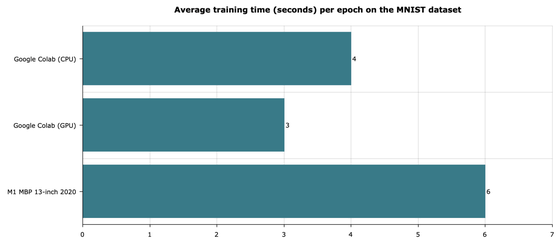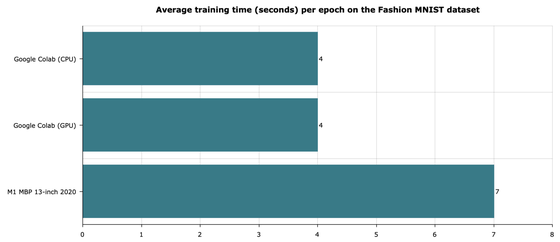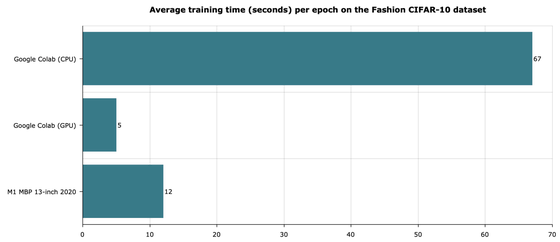As a result of verifying whether M1 equipped Mac is suitable for deep learning

Apple's proprietary
Are The New M1 Macbooks Any Good for Deep Learning? Let's Find Out | Better Data Science
https://www.betterdatascience.com/m1-deep-learning/
The M1 chip is a chipset that combines an 8-core CPU, 8-core GPU, 16-core neural engine, etc., and it has become clear that the CPU performance and GPU performance alone are higher than the previous generation Mac. I will.
The following shows the results of benchmark testing of the CPU and GPU of the M1-equipped MacBook Pro (bottom) that appeared in 2020 and the Intel processor-equipped MacBook Pro (top) that appeared in 2019 using Geekbench 5 . The single-core, multi-core, and OpenCL scores are all overwhelming for the M1-equipped MacBook Pro.

Multiple benchmarks have shown that the M1 chip is high-performance, but Better Data Science verifies how fast the M1 chip works for deep learning-related tasks. I am.
However, the M1 chip isn't compatible with all data science libraries, 'for example, getting TensorFlow version 2.4 to work properly on an M1-powered Mac isn't as easy as it sounds,' Better Data Science explains. doing.
Therefore, Better Data Science notes that the benchmark results shown below only show the 'average training time' when deep learning is performed on each Mac, and are 'not scientific'. I am writing.
The following is the time taken to train a

The following shows the time taken to train the same neural network as above using


Better Data Science says, 'The M1 chip offers better performance, no overheating, and better battery life. Still, it's hard to recommend to anyone interested in deep learning.' Is about twice as performant as an Intel-based Mac, but it's not a machine built for deep learning. Don't get me wrong. The MacBook Pro can be used for basic deep learning tasks. You can, but if you do deep learning on a daily basis, there are better machines in the same price range, 'he said, saying that there are better machines for deep learning.
Related Posts:
in Software, Posted by logu_ii




